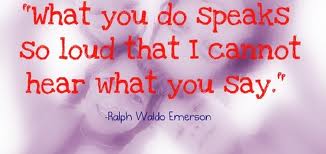He was about eighteen years old, confident and brimming with a raucous if not unsettling laughter that seemed to emanate from his being. He garnered attention, even from a distance; and he seemed to hold a certain court with the peers who surrounded him. That he thought he was very funny was clear. Whispers, then eruptions of more laughter, he held his young audience rapt. Perhaps picking up on a theme he had hitherto established only verbally, he removed his sweatshirt and positioned it under his t-shirt and in an instant molded it into the shape of a sophomoric caricature of two breasts. His cackling escalated. He stood up and proceeded to parade himself around reminding everyone within earshot that “hey, honey,” his “eyes were up here.”
I looked at my two children, who were blissfully unaware of his antics only twenty feet away, and was grateful they were so engrossed in their latest playground project. But then I looked at the twenty-plus six- to seven-year-olds who surrounded him, who were in this young man’s care and thought, “Where are we?”
You see, this 18-year-old man is a camp counselor, in charge of and a role model to more than two dozen young people–girls who must have looked at his display and wondered what his parody says about their bodies, boys who contemplated what it means to be a young man.
 Some might argue that among older children and adults these sorts of shenanigans are while admittedly bawdy ultimately harmless fun. And while I fiercely disagree that these displays are not only poor excuses for a sense of humor but also anything but harmless, I think most of us can agree that they belong nowhere near children. Children see adults–even the youngest and least mature of the adults–as worthy of emulation, as guides to the world they will one day inherit. And a fifteen-second shtick such as this has the power to wreak havoc with a young girl’s self-esteem not to mention perpetuate misguided notions to young boys about what it means to be a man precisely because it comes from one they see as a role model.
Some might argue that among older children and adults these sorts of shenanigans are while admittedly bawdy ultimately harmless fun. And while I fiercely disagree that these displays are not only poor excuses for a sense of humor but also anything but harmless, I think most of us can agree that they belong nowhere near children. Children see adults–even the youngest and least mature of the adults–as worthy of emulation, as guides to the world they will one day inherit. And a fifteen-second shtick such as this has the power to wreak havoc with a young girl’s self-esteem not to mention perpetuate misguided notions to young boys about what it means to be a man precisely because it comes from one they see as a role model.
As a parent, of course, this is more than disconcerting. Who are the adults–young and old alike–who are influencing our children? Who is helping to form our sons’ and daughters’ senses of self? Because we know we cannot raise our children in the proverbial bubble, we send them off with other adults–to school, to camp, to workshops, on play dates and sleepovers–and we have to trust. And most of the time it’s fine. But then there are the times it’s not.
What happens next for this young man, this camp counselor who may not even realize the impact he has, who has been trusted by parents and employers and the community to be appropriate, I cannot say. What I can say is while I know he’s not the first and he won’t be the last to say or do something in this vein in front of the children for whom he is charged with caring, I hope he learns from this. He’s somebody’s son and may someday be somebody’s father–not to mention your child’s teacher or coach.
We can’t eradicate all the ills, but I believe we can make difference–perhaps it’s the only way we can make a difference–by observing, speaking up, and tackling one at a time.









